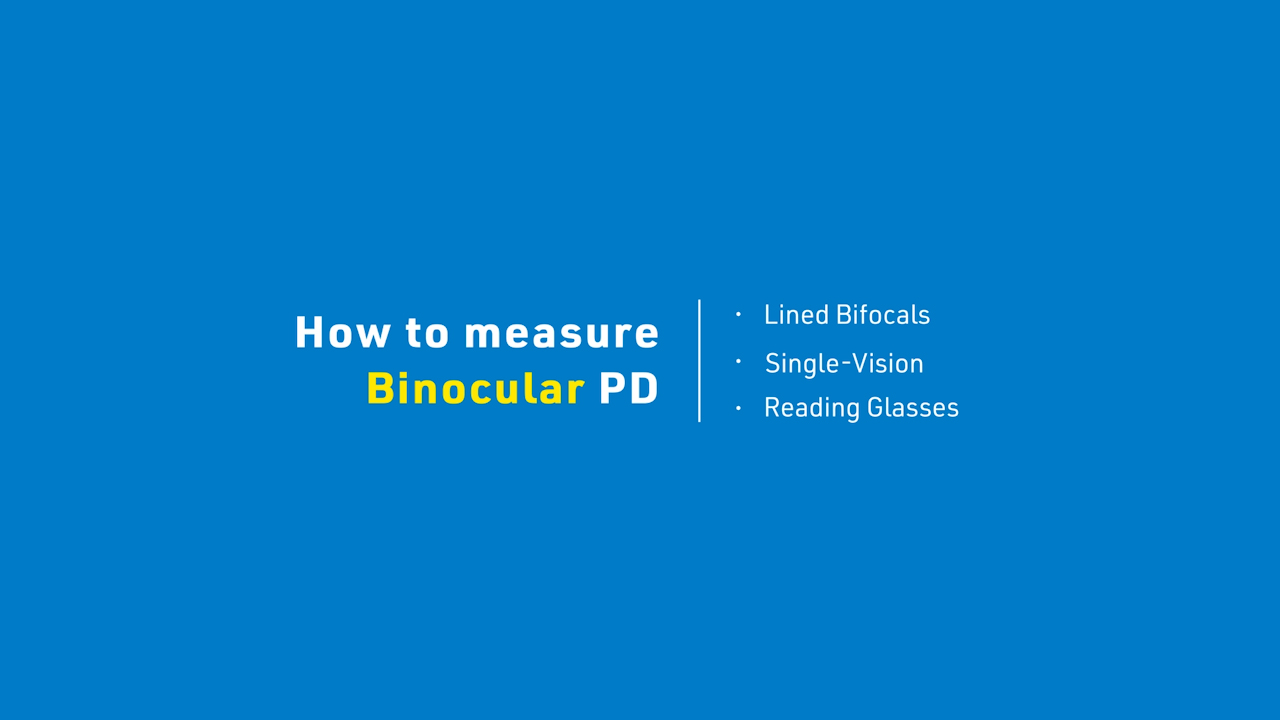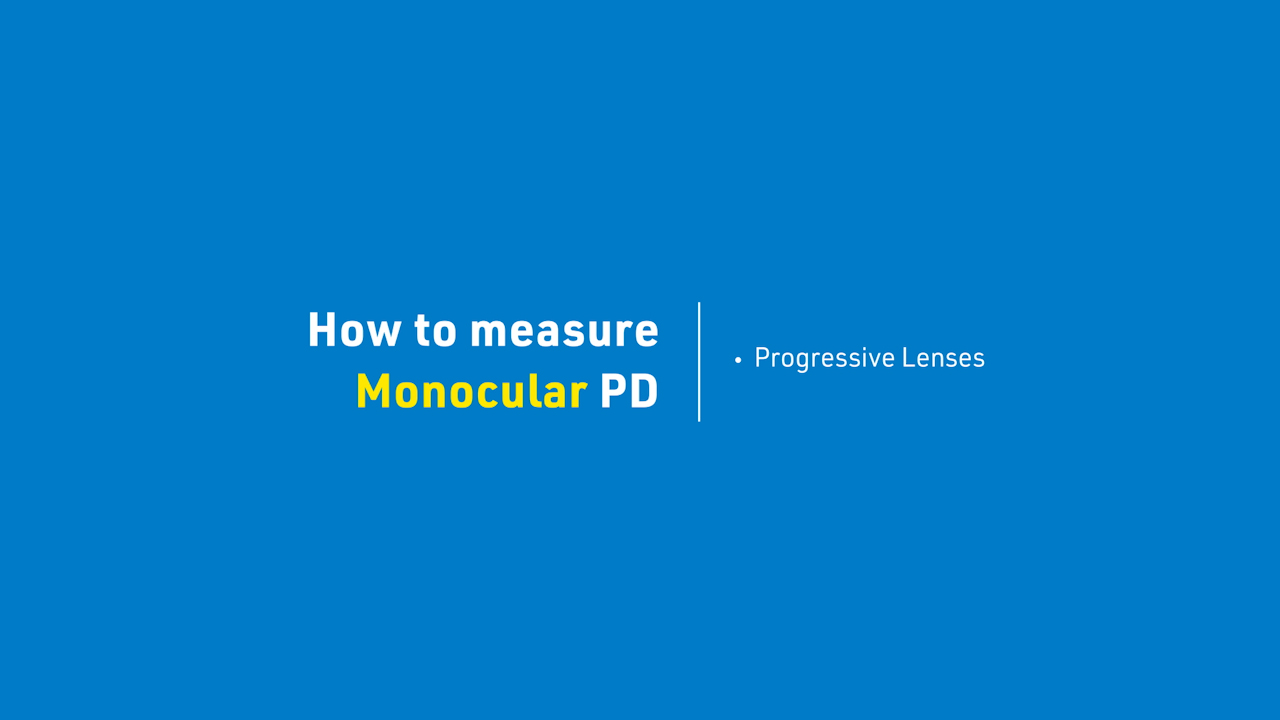How to measure your Pupillary Distance (PD)
If you want to order glasses online from My Eyelab you will need to know your Pupillary Distance (PD). Here are a few definitions and tips for you to be ready to purchase your dream glasses from us with your PD ready!
So, what is Pupillary Distance?
Pupillary Distance (PD) is the distance between the centers of your pupils. It determines where you look through the lens of your glasses. It is an essential measurement when buying a new pair of eyeglasses or prescription sunglasses online because it will align the center of each lens of your glasses with the front of your pupil.
There are two types of Pupillary Distance: Monocular and Binocular. We will talk about how to measure each one of them in this article, but first we recommend you to check the video below to get to know them better.
How to measure your Pupillary Distance (PD)
If you want to order glasses online from My Eyelab you will need to know your Pupillary Distance (PD). Here are a few definitions and tips for you to be ready to purchase your dream glasses from us with your PD ready!
So, what is Pupillary Distance?
Pupillary Distance (PD) is the distance between the centers of your pupils. It determines where you look through the lens of your glasses. It is an essential measurement when buying a new pair of eyeglasses or prescription sunglasses online because it will align the center of each lens of your glasses with the front of your pupil.
There are two types of Pupillary Distance: Monocular and Binocular. We will talk about how to measure each one of them in this article, but first we recommend you to check the video below to get to know them better.

Measure your Binocular PD
If your PD has only one number, that's a Binocular PD. The most precise way to obtain your PD is from your eye doctor. If your PD is not included with your prescription, we strongly recommend that you call your doctor and request your PD.
If your eye doctor cannot provide your PD, please follow the instructions in the video below.
Measure your Binocular PD
The most precise way to obtain your PD is from your eye doctor. If your PD is not included with your prescription, we strongly recommend that you call your doctor and request your PD. If your eye doctor cannot provide your PD and you can’t have it measured professionally, it is possible to measure it yourself.
PD is measured in millimeters (mm). You will only need a millimeter ruler and a mirror. Follow the steps below, and try to measure your PD multiple times to ensure that it is accurate and consistent.

Use our downloadable ruler to measure your PD.
Download the measurement ruler here.
Follow the steps from the video, and try to measure it multiple times to ensure that it is accurate and consistent.
Measure your Monocular PD
If your PD has two numbers, that's a Monocular PD. The most precise way to obtain your PD is from your eye doctor. If your PD is not included with your prescription, we strongly recommend that you call your doctor and request your PD.
If your eye doctor cannot provide your PD, please follow the instructions in the video below.

Use our downloadable ruler to measure your PD.
Download the measurement ruler here.
Follow the steps from the video, and try to measure it multiple times to ensure that it is accurate and consistent.
Order your glasses online!
To order from My Eyelab, you will need your up-to-date prescription, pupillary distance (PD), and your credit card.
Select your frames, prescription type, and add-ons, then add the prescription from your account or enter it manually (you will add your PD there if we don’t have it in our records), and check out, as simple as that!
If you were able to get your PD by following the instructions above, you are now all set to make your purchase! Select one of our featured frames below, or click to shop now to see all the frames selections we offer for you online.
FAQs
Where is the PD on my prescription?
Your PD number will be in the ‘PD’ or ‘pupillary distance’ section of your eyeglass prescription. It could also be written where the doctor adds the notes or remarks. If you don’t find any PD information in your prescription, you can try calling your doctor and requesting it.
Why do I need to measure my PD multiple times?
You want your PD to be exact! So, just to make sure and as a good practice, we recommend having it measured more than once. If your lenses aren’t centered correctly, they can cause discomfort and eye strain. A small margin of error might not cause problems, but it’s better to be as accurate as possible.
Is there a range on the PD values?
Normally an Adult PD range goes from 54mm to 74mm meanwhile, the kids PD ranges go from 43 mm to 53 mm, but every person’s PD can vary depending on different factors. Make sure your PD is as much accurate as possible.
I have two PD numbers on my prescription, what does it mean?
If your prescription has two pd numbers, says dual PD, monocular PD, or PD R and PD L; it means that you have a dual PD. It is the distance in millimeters between the centers of each pupil to the bridge of the nose. Normally, the values are the following way: PD 34/31, or PD R 34 L 31, where the first number is the right eye, and the second is the left eye. (Some prescriptions may have ‘OD’ for the ‘right’ eye, and ‘OS’ for ‘left’ eye.)
I don’t have a ruler with me, is there another way to measure my PD?
We recommend using a ruler since it is a tool that most of us can have handy, but there are various mobile apps that can measure your PD using your phone’s camera as well, you can search them in your Play Store or Apple Store.
What is a single PD?
The single pupillary distance number is the distance in millimeters between one eye’s pupil to the other eye’s pupil, it is also known as Binocular PD, and it is noted in only one number, i.e. 63 mm, which is different from the dual PD having two numbers, i.e. R 31 mm L 32 mm.


